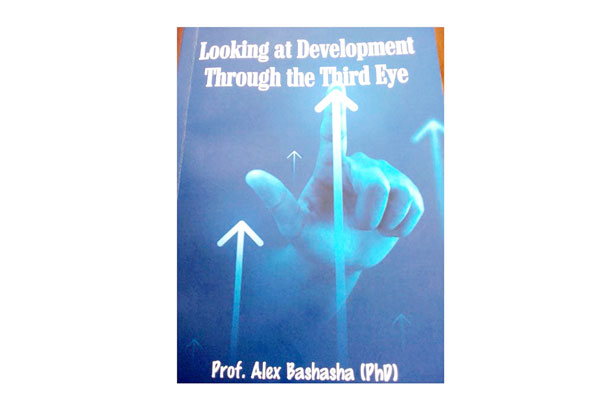Prime
Development: Using the pen to mobilise communities

What you need to know:
- The author refers to grassroots development as a process through which disadvantaged people organize themselves to improve the social, cultural, and economic wellbeing of their households and society.
Looking at Development Through the Third Eye is a collection of compelling articles on transformation and development. From parenting, culture, socio-political, economic and global issues, the 182-page book is a practical guide to understanding the key issues on local and international development.
The author is a researcher with vast experience on global-geopolitical matters. He uses real life examples to explain issues that local communities should address. The book is a practical tool for students, policy makers, opinion leaders and anyone who wants to understand why development is still a pipe dream in some countries.
The debate on having a United States of Africa has raged on for decades. In 1963, 32 signatory governments met in Addis Ababa, Ethiopia and endorsed the formation of the Organisation of African Unity (OAU) to advocate for complete independence.
At the 35th OAU summit held in Libya, President Gaddafi called on the African leaders to consider the reformation of the OAU into a more capable and less constrained African Union, which came into force in 2002. Before his death, Gaddafi visited different countries calling on all leaders to work towards making Africa one entity-The United States of Africa.
Why has Gaddafi’s dream of a united Africa not materialised? What should be done to achieve it? This book has answers to these questions.
He extensively weighs in on the issue of integration of African countries and what leaders can do to fast track Gaddafi’s dream. The author argues that Africa cannot compete favourably unless it is physically, socially, political and economically integrated.
Africa is the world’s poorest continent by GDP per capita, with per capita income representing only 3 percent of the world’s income. However, Africa is rich in natural resources, including 30 percent of the world’s mineral reserves, 8 percent of the world’s natural gas, 12 percent of the world’s oil reserves, Despite having vast resources, Africa remains poor and underdeveloped. The book explains this puzzle and what should be done to save Africa from exploitation and poverty.
The theme of poverty stands out in this book. Why is poverty, wars still a problem in Africa? Why is the continent a hotbed for coups? The book extensively dissects these issues.
The author wonders why poverty is ravaging most parts of Africa yet the continent has vast arable land capable of making Africa the global food basket. How can we get out of this cycle of poverty and dependence? The author refers to grassroots development as a process through which disadvantaged people organize themselves to improve the social, cultural, and economic wellbeing of their households and society.
The book calls for a people-oriented approach to cause transformation. Put people first; ensure community participation in finding solutions for their needs and issues.
The book tackles broad development issues that relate directly to development including politics, culture, economics, and security. He guides on policy formulation and development.
Reviewed by Stephen Matege




